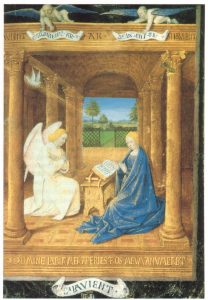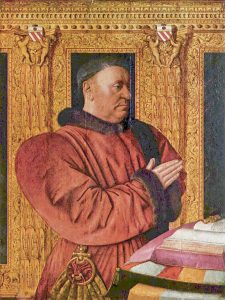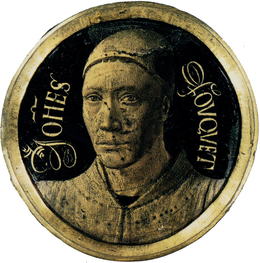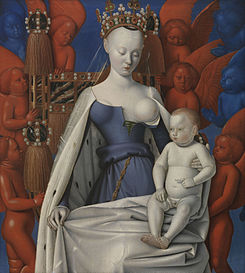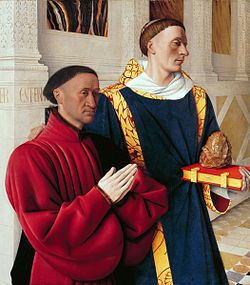Jean Fouquet (1420-1481) was the leading French artist of the 15th century. In addition to being a master of panel painting and manuscript illumination, he is recognized as the inventor of the portrait miniature. Fouquet’s excellence lay in the rendering of minute detail and clear characterization on a very small scale. He was the first French artist to travel to Italy and witness the early Renaissance. In 1447, Fouquet painted a portrait of the Pope Eugene IV. A few years later, he painted a donor’s portrait: that of “Estienne Chevalier, Trésorier de Charles VII de France, avec St Stéphane”. This is considered to be one of his most important works because of Fouquet’s merging of the new ideas of the Italian Renaissance with the refined attention to detail of Flemish art. This combination formed the basis for early 15th century French art, and Fouquet became the founder of a new school of art. During his life, Fouquet worked for the court of Charles VII, treasurer Etienne Chevalier, and Chancellor Guillaume Jouvenel des Ursins. In his later years he became a court painter to Louis XI.
Works Cited:
https://en.wikipedia.org/wiki/Jean_Fouquet
https://www.britannica.com/biography/Jean-Fouquet
The Story of Art – EH Gombrich
